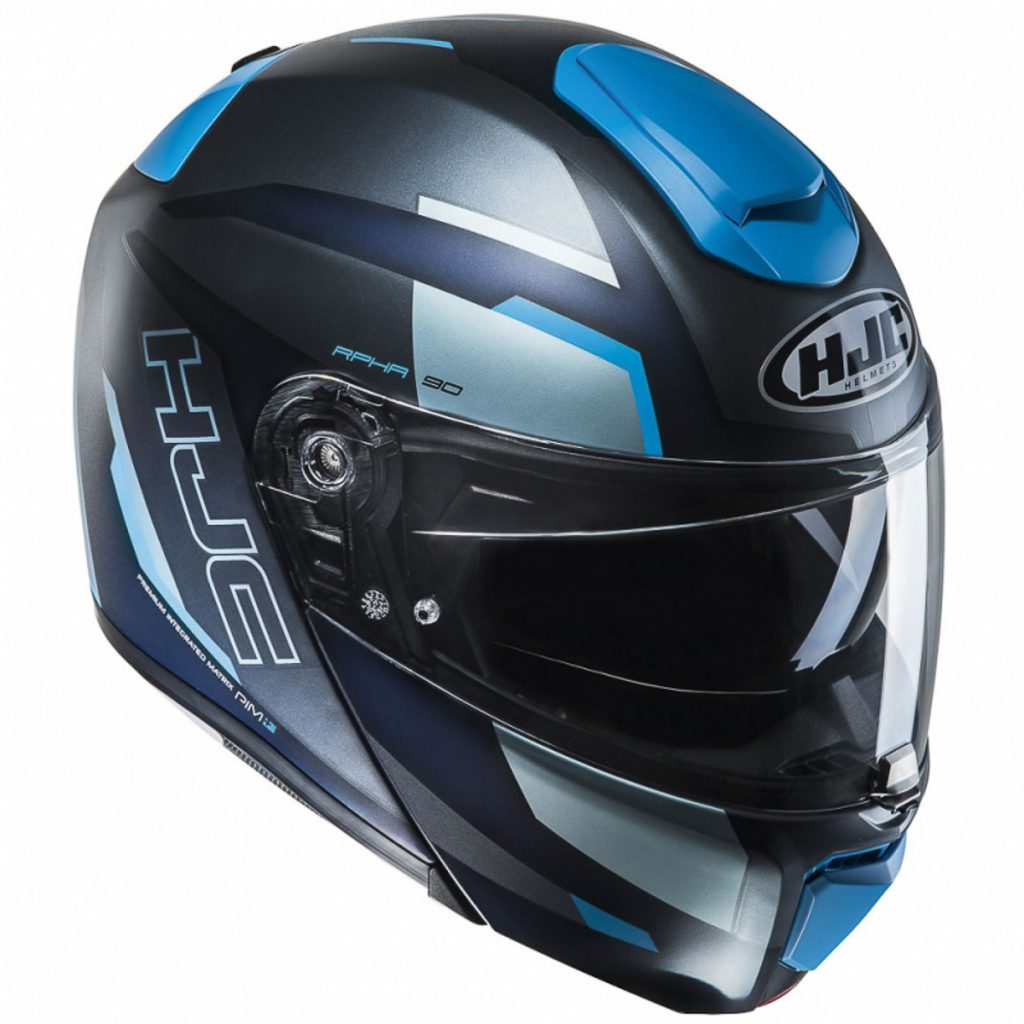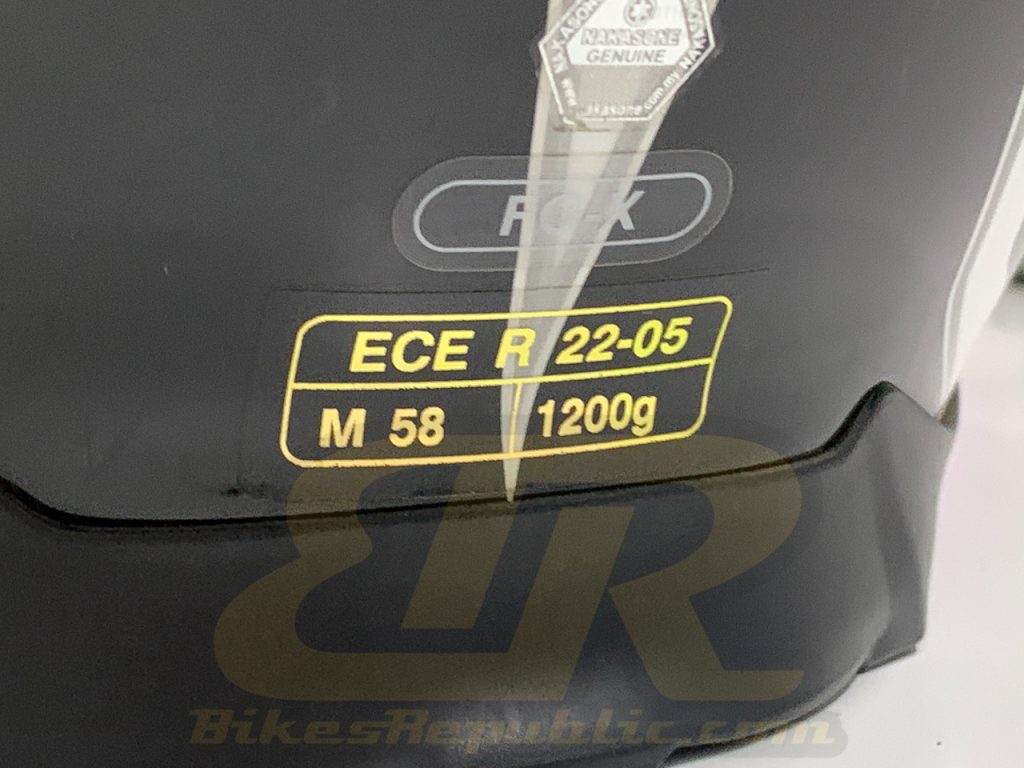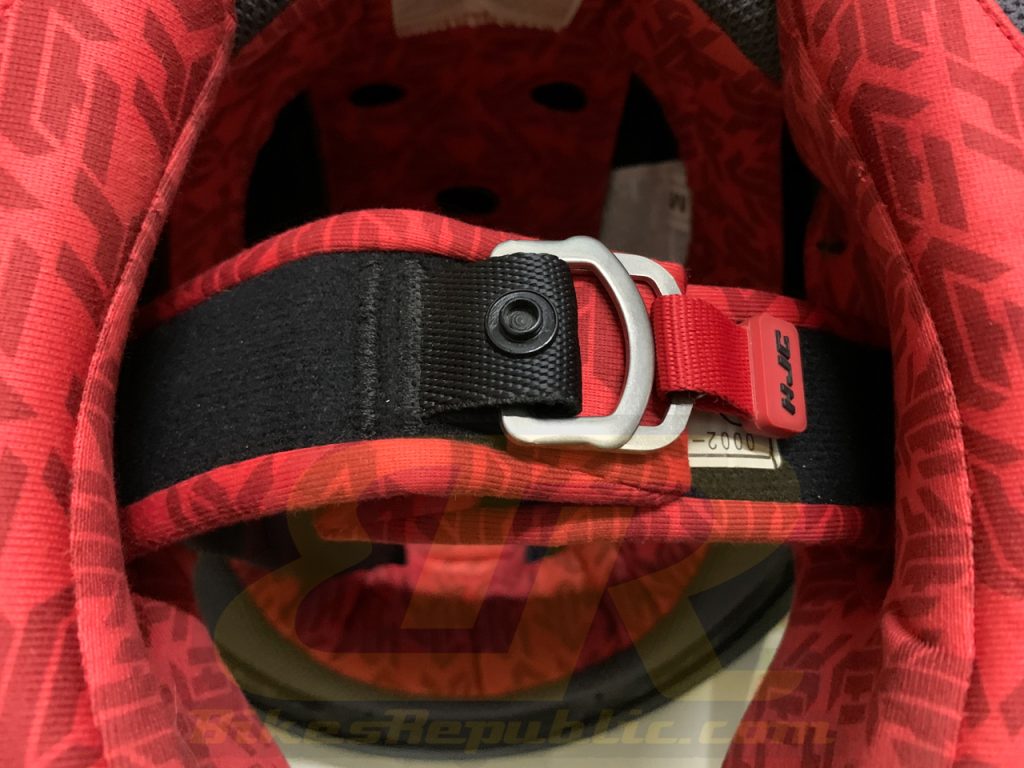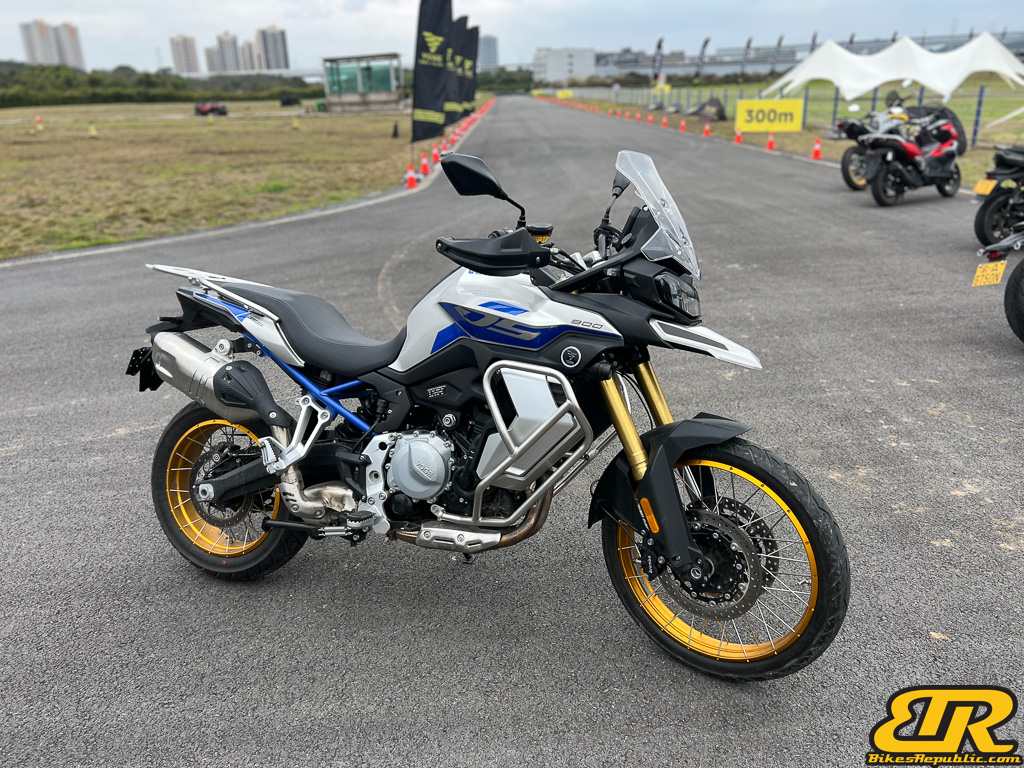-
There a great number of helmet standards the world over.
-
However, the most widely accepted now is the ECE R22.05 (UN R22.05).
-
We don’t say which is better, but you can see the differences for yourselves.
There are a number of helmet standards around the world that helmets need to adhere to for them to be sold in different markets. The most widespread worldwide and also accepted in Malaysia is the ECE R22.05 (UN R22.05).
Before we go further, we would like to tell you about how these standards lead to the FIM FRHPhe homologation. Beginning 2019, the certification is employed for racing series governed by the FIM, including but not limited to MotoGP, Moto2, Moto3, WorldSBK, FIM EWC, etc.
What is ECE R22.05 (UN R22.05)?
ECE stands for “Economic Commission for Europe.” It was created by the United Nations (UN) in 1958, referring to the set of regulations concerning wheeled vehicles, equipment and parts. The numbers indicate regulation no. 22, incorporating the 05 series of amendments to the standard. ECE R22.05 is currently accepted in 62 countries.
Since the ECE was set up by the UN, this is why you could see the UN R22.05 sticker on certain helmets.
Regulation No. 22 was issued in 1972 and contained the requirements for coverage of the head, field of vision, user’s hearing, projections from the helmet, as well as durability of materials. Also, the helmets will be tested for cold, heat and moisture treatment, shock absorption, penetration, rigidity, chainstrap strength and flammability. It also stipulates the maximum helmet shell mass of 1 kg.
The regulation also prescribes how helmets must be labeled. Information include size and mass, besides information on how to wear the helmet. Apart from that, the type approval mark (stitched onto the chinstrap) must be specified.
The type approval mark includes the “Eaa 05bbbb/c-ddd” code.
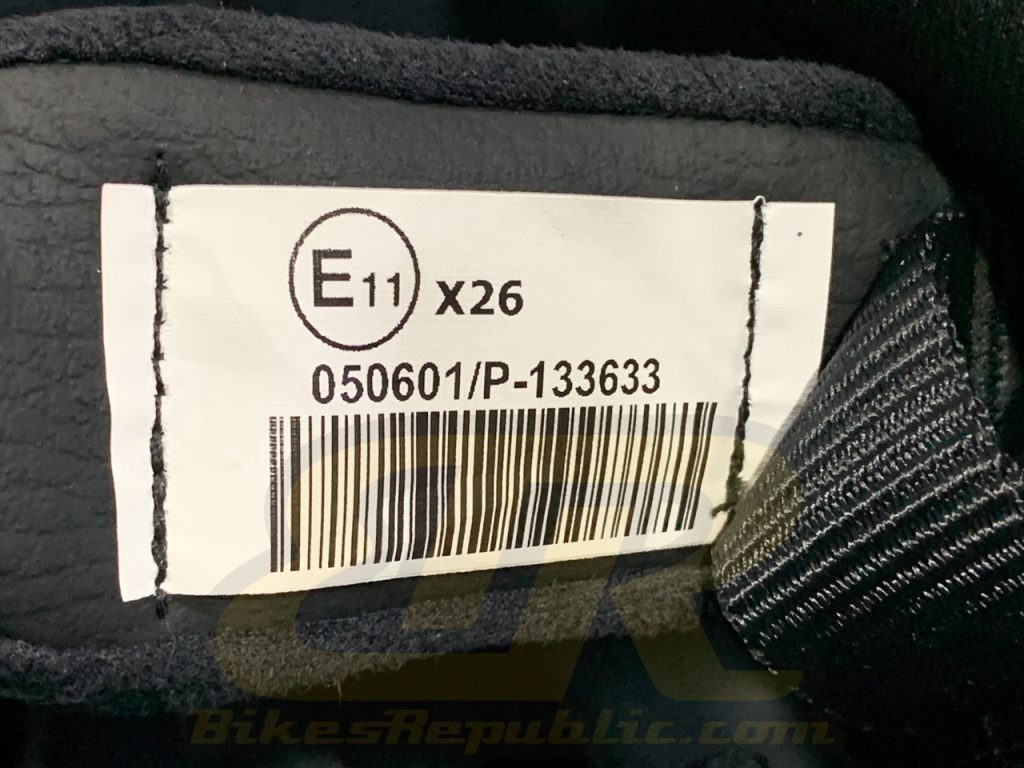
These codes mean:
- Eaa (within a circle) pertains to which country’s authority approved the helmet.
- E1 – Germany
- E2 – France
- E3 – Italy
- E4 – The Netherlands
- E5 – Sweden
- E6 – Belgium
- E7 – Hungary
- E8 – Czech Republic
- E9 – Spain
- E10 – Yugoslavia
- E11 – United Kingdom
- E12 – Austria
- E13 – Luxemborg
- E14 – Switzerland
- E16 – Norway
- E17 – Finland
- E18 – Denmark
- E19 – Romania
- E20 – Poland
- E22 – Russia
- E23 – Greece
- E24 – Ireland
- E25 – Croatia
- E26 – Slovakia
- E27 – Slovenia
- E28 – Belarus
- E29 – Estonia
- E31 – Bosnia and Herzegovina
- E32 – Latvia
- E34 – Bulgaria
- E36 – Lithuania
- E37 – Turkey
- E39 – Azerbaijan
- E40 – Macedonia
- E42 – European community (this is unused)
- E43 – Japan
- E45 – Australia
- E46 – Ukraine
- E47 – South Africa
- E48 – New Zealand
- 05: Series of amendments.
- bbbb: Approval number issued by the approving authority.
- c: Type of helmet i.e.
- “J” – jet-type or open-face.
- “P” – protective lower face cover, for example the chinbar of a full-face helmet.
- “NP” – Non-protective lower face cover.
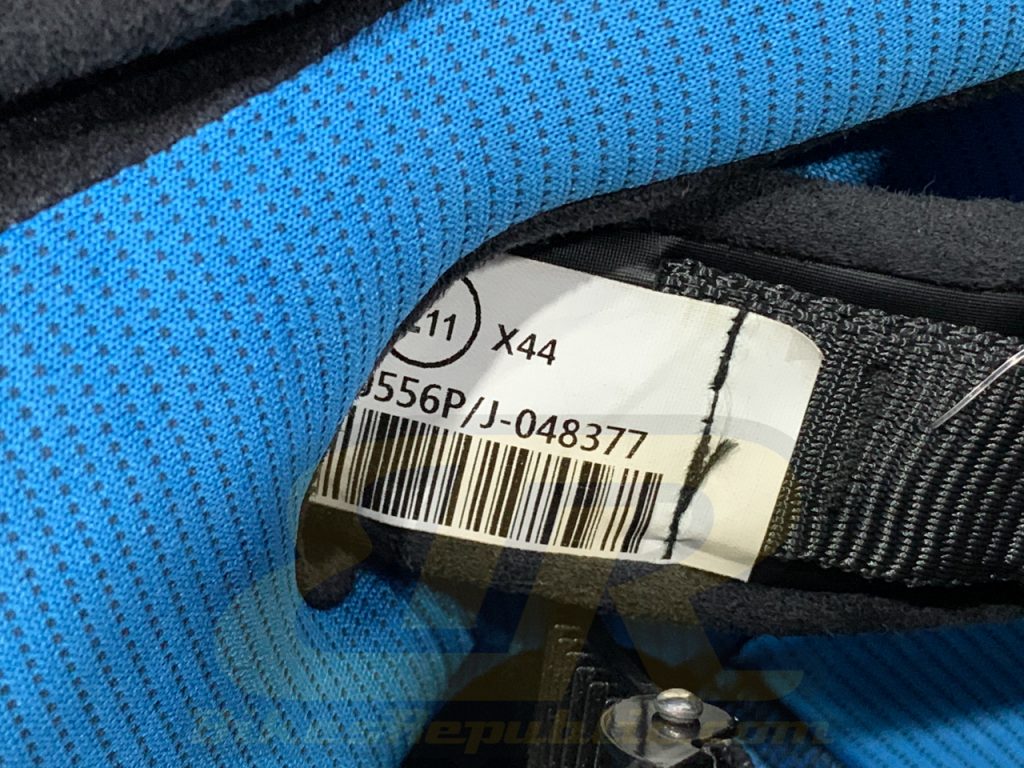
NOTE on type of helmet code. Pay attention when you buy modular/flip-up helmets. Certain ones are certified as J/P (or P/J), but there are also ones certified as J/NP (or NP/J). The latter means that the chinbar is non-protective or not tested for protection. Modular helmets are certified as “J”-type as the flip-up portion is considered an attachment.
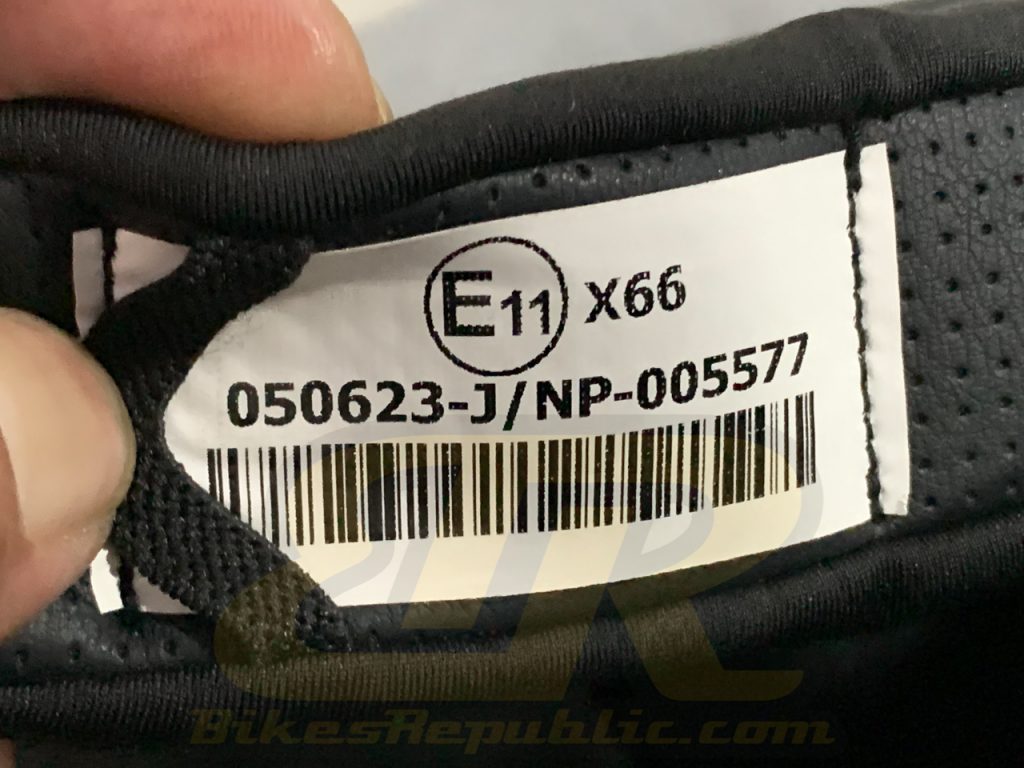
Testing and certification
The helmets must be tested in order to obtain certification. As mentioned, the standard specifies the types of tests and specifications required.
Among the main criterias:
- Peripheral vision (“side vision”) through a 105-degree arc from the helmet’s midline.
- Impact absorption test must see less than 275 G of peak acceleration. A headform is fitted with the helmet and dropped from a fixed head onto a steel anvil.
- The retention system (chinstrap) must not move more than 35mm. Test involves a free-fall drop of a 10 kg weight attached to the chinstrap from 750 cm.
- Chinstrap buckle system cannot slip under abrasion resistance and tension failure load of 305.9 kg.
- Chin cups are banned.
- The helmet is also tested for abrasion resistance. The helmet’s surface is required to either sheer away or lets the test surface slip past. Sheering away and slipping past means the helmet doesn’t “stop” when its sliding across the road. If it stops, it’ll introduce rotational forces to the neck i.e. twisting it! This is why projections from the helmet cannot exceed 2 mm.
- Helmet shell rigidity is also tested and must withstand more than 64.2 kg. It fails if it deforms.
- For quick-release mechanisms (such as the micrometric buckle), tests are performed to check for accidental operation, ease of release and durability. The buckle is tested every 2 seconds for 5,000 times. For buckle mechanisms containing metal, the release test is conducted after the mechanism was exposed to corrosive solution.
- The ECE 22.05 does not require penetration test.
There are tests for the visor, as well:
- Ultraviolet conditioning.
- Mechanical impact test checks for sharp splinters.
- Light transmission through the visor, there are also specifications for tinted visors for daytime use only.
- Light diffusion as in how much light scatters towards to eyes.
- Scratch resistance to measure light diffusion (the “star effect”) of a scratched visor.
- Anti-fogging if the visor has been treated for it.
- Ease of lifting the visor out of view with one hand.
ECE compliant helmets are batch tested when production begins. The manufacturer is required to submit up to 50 sample helmets and/or visors to a designated laboratory working for the local government which uses the ECE standard.
Hope this tells you a bit more about what’s involved in helmet testing and their certification.

